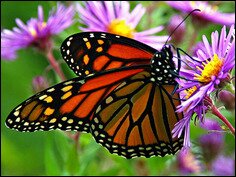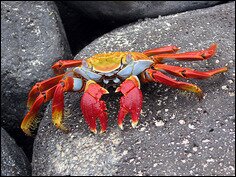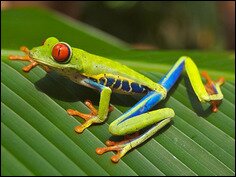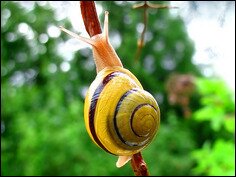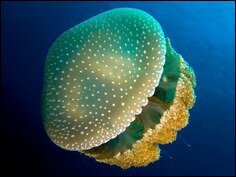What Do Insects Eat?
Current Category: Insects.
Insects are invertebrates in the phylum arthropods. There are more than 920,000 identified species of insect, and the insect group makes up 85% of the animal kingdom. Over the millions of years that insects have existed and evolved, they have developed many methods of obtaining and digesting food, and their feeding methods can sometimes harm or help, other creatures.
 Lubber Grasshopper (Romalea guttata). Photo by Tom Friedel.
Lubber Grasshopper (Romalea guttata). Photo by Tom Friedel.
Chewing
Many insects feed by tearing or pinching off plant parts, or animal parts like ants, termites, beetles and grasshoppers. They then swallow this organic material. Chewing insects leave holes behind, as well as ripped or damaged leaves on plants, or bites and sores on animals. Sometimes insects strip all the foliage off a plant, although sometimes insects just focus on eating specific parts of a plant, like the petals, the roots or the reproductive parts. Plants have developed thorns and spines to fend off insects, but the bugs can often eat around or through them. Plants that produce poisons might think they’re smart, but the insects are smarter, as they can cut the tubes transporting the poisons, then eat the rest of the plant that’s been deprived of its protection.
 Ladybird larva consuming an aphid. Photo by Sanjay Acharya.
Ladybird larva consuming an aphid. Photo by Sanjay Acharya.
Sucking
Sucking insects tend to have sharp, tubular mouth parts that they use to pierce the stems of plants or the skins of animals. Examples include fleas, aphids and ladybugs. This method of feeding bypasses the defenses of the plant or animal. Plants often produce seeds that have tough coatings that protect them from some insects, but some insects have specialized feeding parts that can hack through the seed’s coatings to get to the nutritious organic matter inside. In order to cope with poisonous plants, some insects are able to make their guts more acidic or alkaline so that they can neutralize the poisons.
Burrowing
Some insects burrow into a plant or animal and live inside it. Some insects irritate the plant that they’ve moved into, and the plant creates a wall or gall around the insect, which actually protects it, leaving it in peace to siphon off the nutritious juices. Insects have also been known to tie leaves together to hide behind while they feed!
 Praying mantis preying on cicada. Photo by .
Praying mantis preying on cicada. Photo by .
Preying
Of course, there are many species of predatory insect and their diet consist mainly other insects. These insectivores usually use surprise or force to get their prey. Some species will go for anything smaller than themselves, and others have a particular victim. The faster bugs chase slower bugs, before catching and killing them and examples are like wasps and praying mantis. Other insects use stealth and wait for unsuspecting prey to pass by before darting out and ambushing them. Other insects use inviting pheromones to draw in prey.
 Ectoparasites: a male human head louse. Photo by Gilles San Martin.
Ectoparasites: a male human head louse. Photo by Gilles San Martin.
Parasites
Parasites look for warm-blooded host animals, and then they either suck their blood or bite of tiny chunks of tissue. It’s in the best interests of the parasite to make sure that the host stays alive so that they continue to provide a cozy home. Endoparasites, like worms, live inside the bodies of their hosts whereas ectoparasites, like fleas or head lice, live on the surface or in the hair. There are also parasitoid insects, which kill their hosts quite rapidly by eating them from the inside out.
 A European honey bee extracts nectar from an Aster flower using its proboscis. Pic by John Severns.
A European honey bee extracts nectar from an Aster flower using its proboscis. Pic by John Severns.
Pollinating
Phytophagous insects live on plants, but don’t do them any damage. Some bugs actually help their plants by acting as pollinators, in exchange for nectar. The best known examples of this type are butterflies and bees. These insects don’t harm the plants as they want to return to them every year.
What do other species of insects eat?
Below is a list of insects that I have not mentioned in the article above and you can read more about their specific diets.
- Caterpillars
- Cicadas
- Cockroaches
- Crickets
- Dragonflies
- Fireflies
- Flies
- Mosquitoes
- Moths
- Stink Bugs
More on insects: What is insectivore? and insect food chain.



